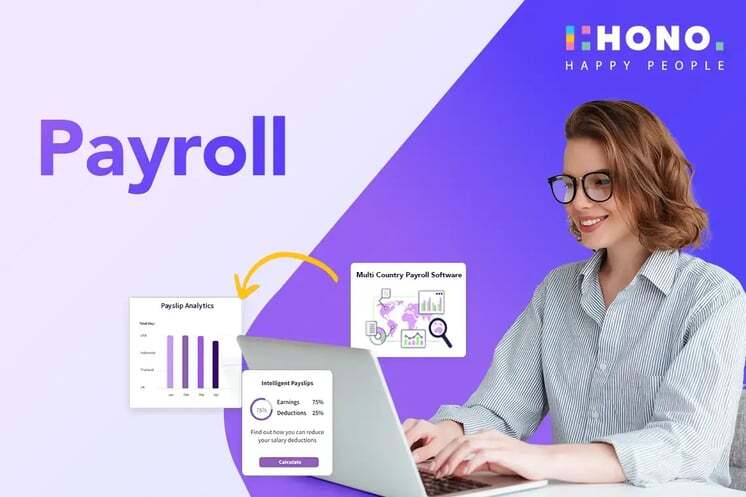The concept of overtime ensures both productivity and employee well-being within a modern workspace. As organizations overcome the complexities of overtime management, the significance of understanding and adhering to overtime compliance cannot be overstated. Through this blog, let’s try to understand overtime compliance, its regulations and the critical role it plays in the modern workplace. In particular, let’s explore the role of advanced solutions such as employee overtime compliance software, employee overtime tracking software and overtime tracking and management software for enterprises. These technological tools have become indispensable for businesses seeking not only to streamline their operations but also to ensure precision and adherence to regulatory standards in managing employee overtime effectively.
Understanding Overtime Compliance: A Guide for Employers
6 mins

Basics of Overtime
Overtime serves as a critical concept, representing hours worked beyond the standard workweek. It is typically triggered when an employee surpasses the predefined threshold of weekly or daily working hours. Standard overtime rules and regulations vary, but they commonly mandate employers to compensate eligible employees at a higher rate for each additional hour worked beyond the standard. These regulations aim to ensure fair compensation for the extra time and effort contributed by employees, building a balanced and equitable work environment. Understanding the basics of overtime, from its definition to details of applicable rules, is essential for both employers and employees to maintain compliance and uphold the rights and well-being of the workforce.
Overtime Pay and Calculation
Understanding how overtime pay works is important for both employers and employees. Overtime pay requirements mandate that eligible employees receive extra compensation for working beyond their standard hours. This is where innovative solutions like employee overtime compliance software, employee overtime tracking software and overtime tracking and management software for enterprises come into play. These advanced tools simplify the process of tracking extra hours worked, ensuring accurate calculations for overtime compensation. They not only streamline administrative tasks but also contribute to maintaining compliance with overtime regulations.
Overtime Exemptions
Overtime exemptions form a critical aspect of labor regulations, distinguishing between exempt and non-exempt employee classifications. Understanding these distinctions is pivotal for employers seeking to navigate overtime compliance effectively. Exempt employees are generally not eligible for overtime pay, and this classification hinges on both job duties and salary thresholds. Job duties must align with specific criteria, often related to the nature of the work and level of responsibility. Additionally, salary thresholds set a minimum income for employees to qualify as exempt. This nuanced interplay of job duties and salary thresholds necessitates careful consideration to ensure accurate employee classification and compliance with overtime regulations. Employers can benefit from leveraging tools like employee overtime compliance software to streamline this process, facilitating precise classification and reducing the risk of misinterpretation.
Common Overtime Compliance Mistakes
Common overtime compliance mistakes can have significant repercussions for employers, ranging from financial penalties to damage to the company's reputation. Misclassifying employees, a prevalent error, occurs when workers are incorrectly labeled as exempt from overtime when they should be non-exempt. This often arises from a misunderstanding of job duties or salary thresholds. Failing to include all compensable work time is another common pitfall, where employers unintentionally overlook certain activities that qualify as work, leading to underpayment. Ignoring state-specific overtime regulations is yet another mistake, as employment laws can vary widely between states, necessitating careful consideration to ensure compliance. To mitigate these risks, employers can benefit from utilizing employee overtime tracking software, which not only helps prevent these common mistakes but also streamlines the overall overtime management process.
Also Read: Automating Overtime Management with HONO HCM
Tips for Ensuring Overtime Compliance
1. Regularly review and update overtime policies to align with current regulations.
2. Provide comprehensive training to employees on overtime regulations, ensuring awareness and understanding.
3. Utilize employee overtime tracking software for accurate and efficient monitoring of overtime hours.
4. Establish clear procedures for requesting and approving overtime, promoting transparency and consistency.
5. Leverage technology, such as overtime tracking and management software, for precise time tracking and reporting.
6. Stay informed about state-specific overtime regulations, considering variations in labor laws that may impact compliance.
Overtime Compliance Audits
Overtime compliance audits are essential components of responsible workforce management, helping organizations uphold legal standards and avoid potential pitfalls. Periodic internal audits, emphasized in this context, provide businesses with the means to proactively review their overtime records, ensuring accuracy and alignment with established policies. These internal checks not only bolster internal controls but also serve as preemptive measures to identify and rectify any potential compliance issues before they escalate. Moreover, seeking external assistance for comprehensive compliance reviews adds an extra layer of assurance. External experts, often facilitated by sophisticated tools such as employee overtime compliance software, bring an unbiased perspective, thorough understanding of labor laws, and a meticulous approach to auditing. This dual strategy of internal audits and external expertise contributes to a robust and well-rounded overtime compliance framework, instilling confidence in employers that their practices align with legal requirements.
Also read: How to Manage Overtime Efficiently and Accurately
Impact of Remote Work on Overtime Compliance
The widespread adoption of remote work has introduced new dynamics to overtime compliance, requiring employers to navigate additional challenges. With employees working from various locations, accurately tracking and managing overtime becomes more complex. Employee overtime tracking software tailored for remote work environments has become crucial, offering features that facilitate accurate timekeeping and compliance. The blurred lines between work and personal life in a remote setting make it imperative for employers to establish clear guidelines for overtime requests, approvals, and documentation. Leveraging technology and comprehensive policies tailored to remote work scenarios ensures that employers can maintain overtime compliance, mitigate risks, and uphold fair labor practices in this evolving work landscape.
This guide has provided comprehensive insights into Effective Overtime Management Strategies, furnishing employees with essential knowledge to effectively manage employee work hours. Covering fundamental aspects such as the definition and calculation of overtime, exemptions, common compliance pitfalls, and practical tips for adherence, the guide serves as a pragmatic resource for creating a fair and legally compliant workplace. The emphasis on regular internal audits and the potential advantage of seeking external expertise underscores the proactive approach necessary for maintaining strong overtime compliance. Additionally, addresses the challenges brought about by remote work, stressing the importance of clear policies and the use of technology, such as employee overtime tracking software, for precise timekeeping. As workplaces change, a thorough understanding and proactive approach to overtime compliance remain critical, ensuring both the well-being of employees.
Request a Demo Now
Frequently Asked Questions
HCM software automates and streamlines HR processes, making them more efficient and accurate. It provides a centralized platform for managing employee data, tracking performance, facilitating talent acquisition, and improving employee engagement. By leveraging HR management software, organizations can save time, reduce administrative burdens, make data-driven decisions, and enhance overall HR operations.
AI-driven HONO is considered the best HR software due to its innovative use of Artificial Intelligence (AI) to streamline and enhance HR processes. Here’s why. It provides actionable, data-driven insights that enable HR professionals to make informed decisions, improving overall organizational effectiveness and strategic planning. HONO automates repetitive and time-consuming HR tasks, allowing HR personnel to focus on more strategic activities, thereby increasing overall productivity and efficiency. HONO is scalable and adaptable, catering to the evolving needs of organizations, regardless of their size or industry.
Choosing the right Employee Management Software involves considering several factors to ensure it meets the organization’s needs. Here’s a guide to help you choose. Clearly define what you need the HRMS software to achieve, considering aspects like attendance tracking, performance management, and employee development. Determine a budget considering both the initial cost and ongoing expenses like subscription fees, updates, and support. Ensure the HCM software integrates seamlessly with other systems and tools used in your organization, such as payroll and attendance systems. Opt for cloud HCM with an intuitive and user-friendly interface to ensure ease of use for both HR personnel and employees. Assess the human capital management solution's security features and its ability to comply with relevant laws and regulations to protect sensitive employee data. By considering the above factors and conducting thorough research, you can select an Employee Management Software that aligns with your organizational goals and enhances overall workforce management.
.png?width=70&height=70&name=Team%20HONO%20logo-01%20(1).png)
Team HONO








.jpg)
